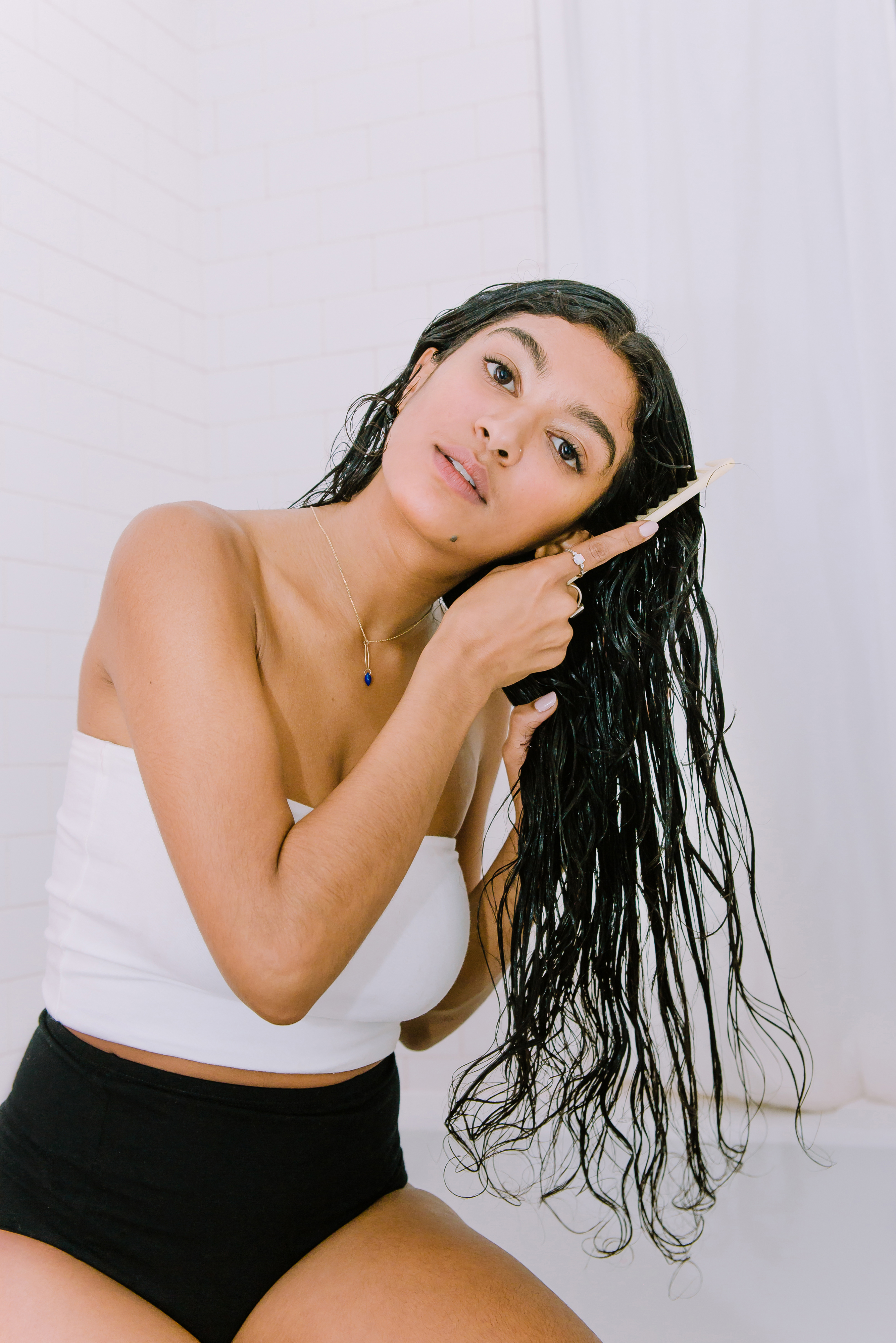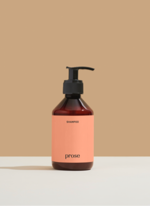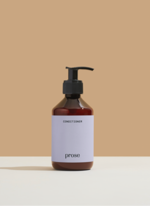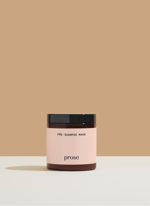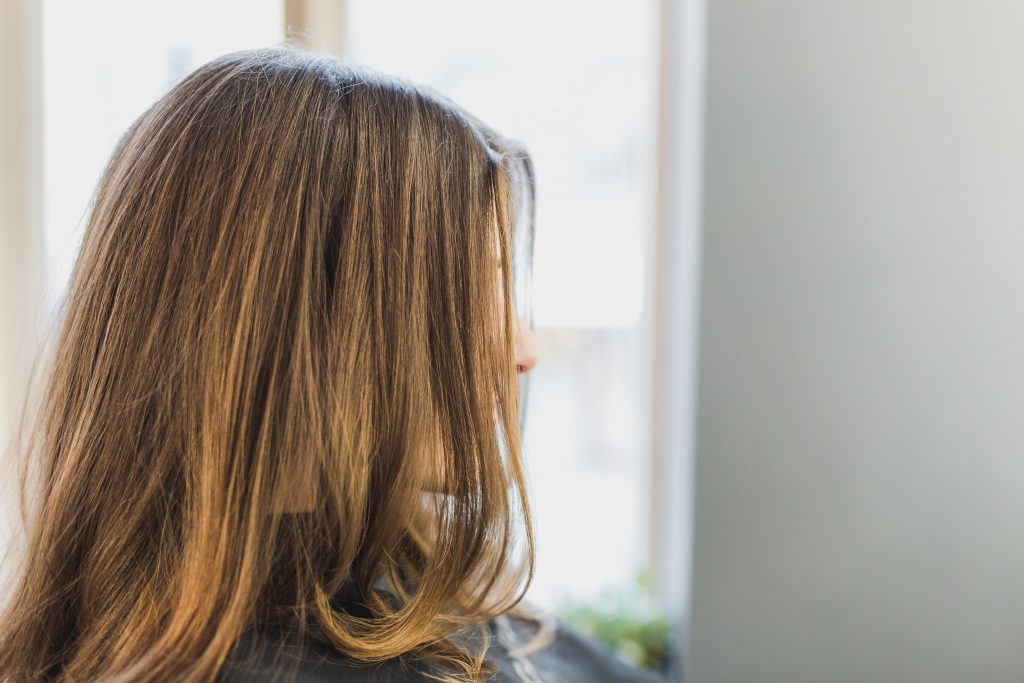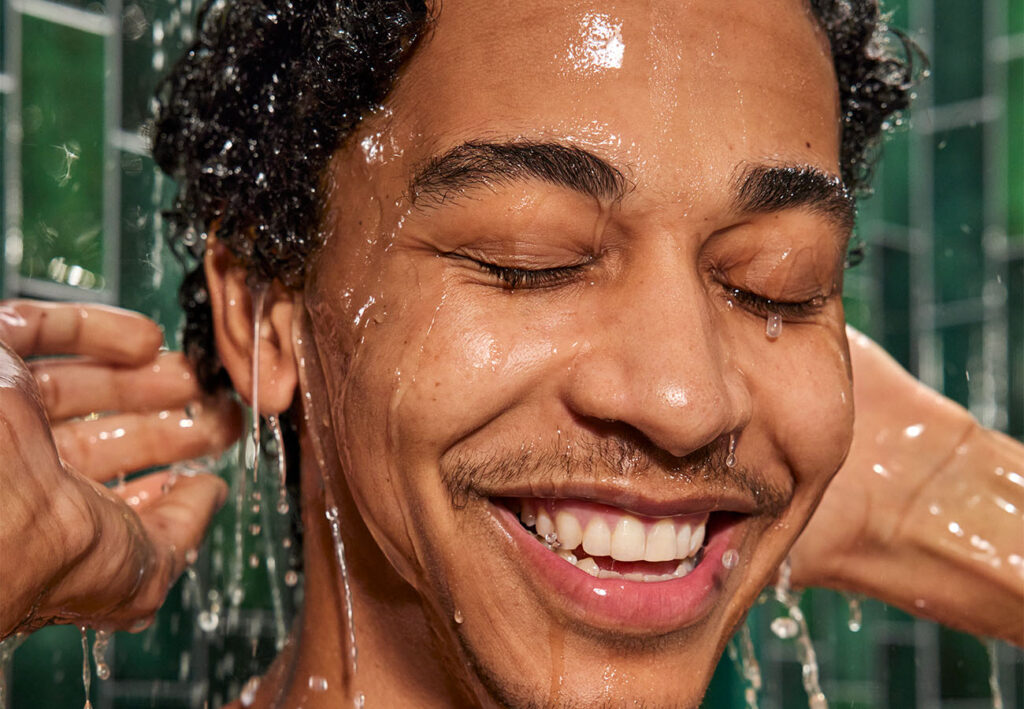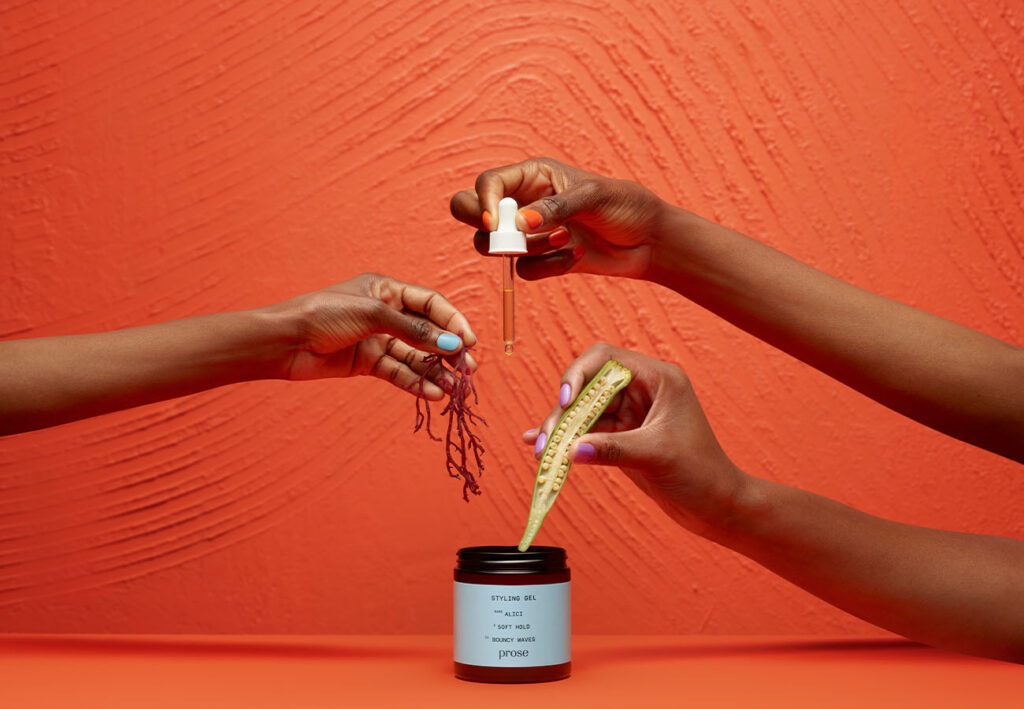Start at the end
The key, when dealing with tricky tangles, is to work in small sections, beginning at the ends of your hair, then slowly, carefully working your way up toward your roots.
Use the right tools
Your fingers are always best because then you can really “feel” the knots and more accurately work them apart. Next best: a wide tooth comb, which is better than a traditional comb because it won’t grab or pull as aggressively on knotty hair. Finally, you may also find success with what’s called a wet brush, a tool typically characterized by very flexible bristles that bend with your hair.
Do dampen
Hair becomes more elastic (read: stretchy) when it’s wet so you will lower the risk of breakage if you detangle when your strands are damp. Wetting with water works, but an even better strategy is spritzing on a detangling spray, which will give hair added slip and make it easier to unwind stubborn snarls. You can either use a pre-mixed detangling solution or make one of your own. Just combine one-half conditioner with one-half distilled water, pour into a spray bottle. Need even more slip than a detangling spray can provide? Squirt a little undiluted conditioner directly onto the knot, then, using two fingertips, gently massage the knot for a few seconds before attempting to work the hair apart again.
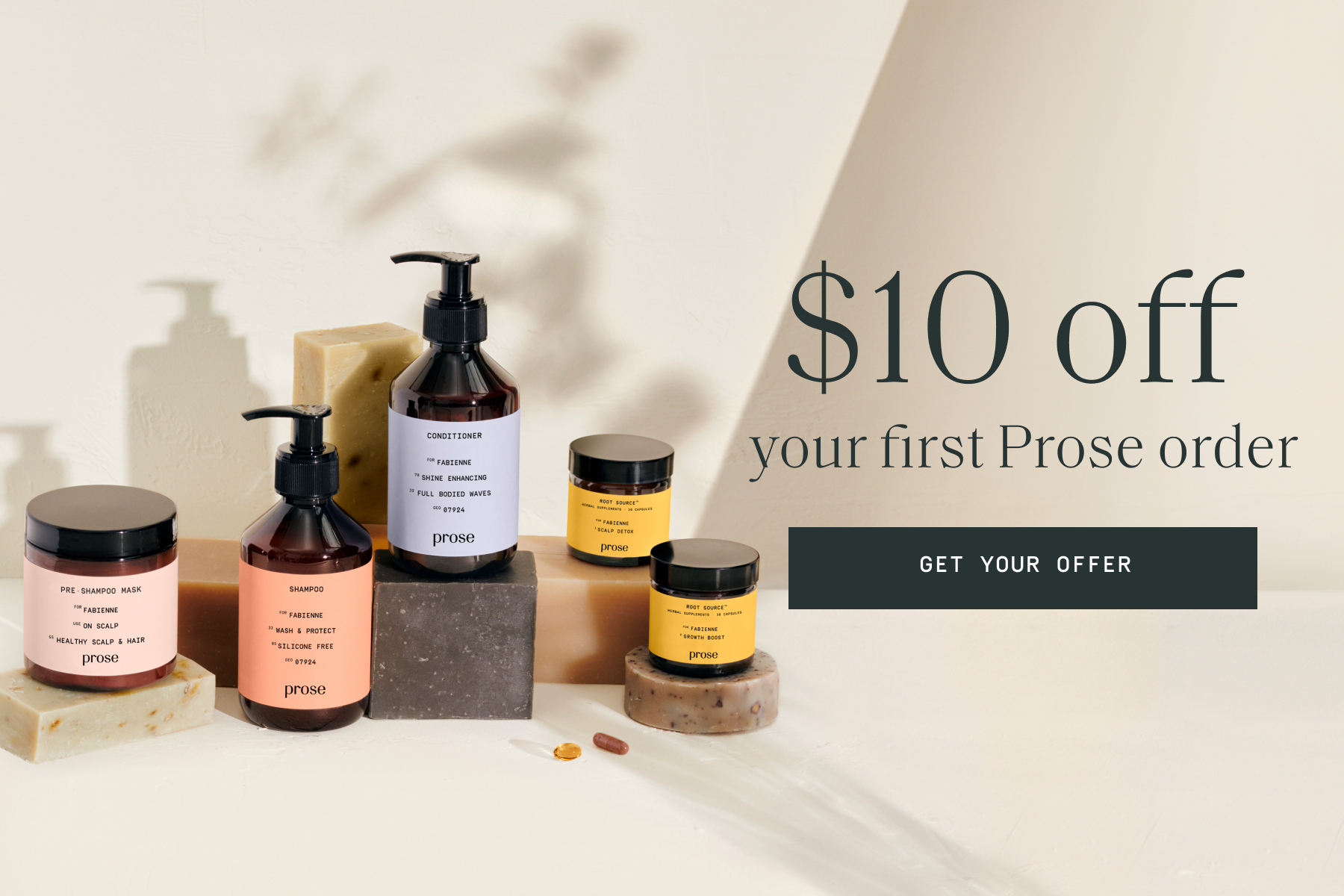
Go easy
Tangled hair is very fragile—think thin gold chains—so treat your hair as you would expensive jewelry. No tugging, ripping or yanking.
Don’t skip conditioner
Even if your hair is very fine or on the oily side, you should still use a conditioner every time you shampoo. Just apply it from ear-level to the ends of your strands to keep that hair silky and snarl-resistant without adding any weight at the roots.
Deep treat
Using a hair mask or hair oil treatment once or twice a month will help keep the ends of your hair (where knots are most common) well-hydrated and less apt to become matted.
See your stylist
The strands most likely to tangle are those that are splitting. Thus, regular visits to the salon—even just for a tiny trim or dusting—will help keep your ends healthy and minimize matting.
Watch what you wear
Turtlenecks, scarves and high-collared coats all rub against the ends of your hair, causing friction that can lead to knots. So, if you are going to wear something that comes in constant contact with your ends, consider an updo for the day, such as a ponytail, braid or knot at your nape.

